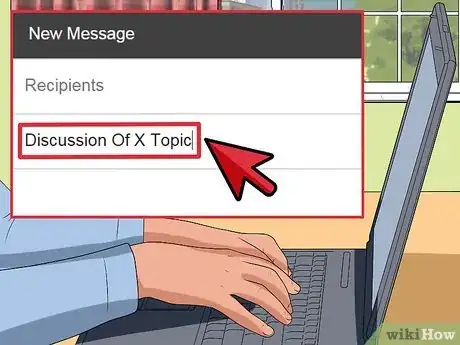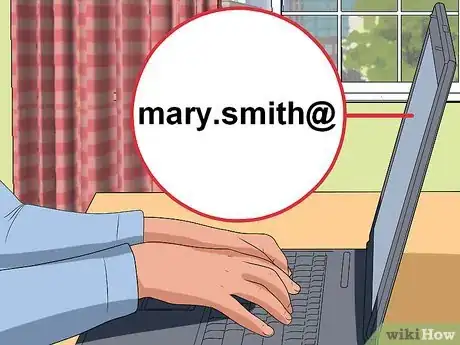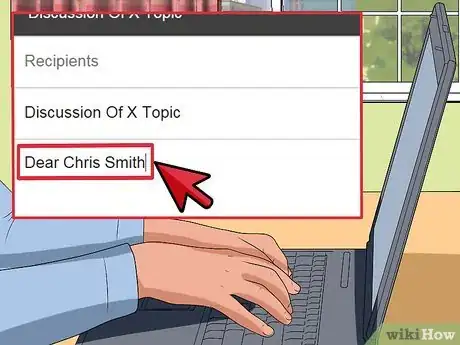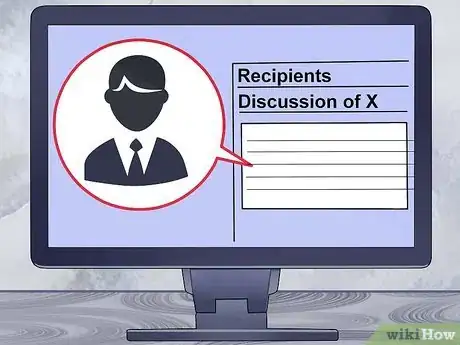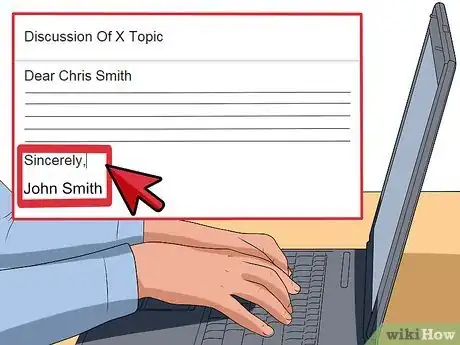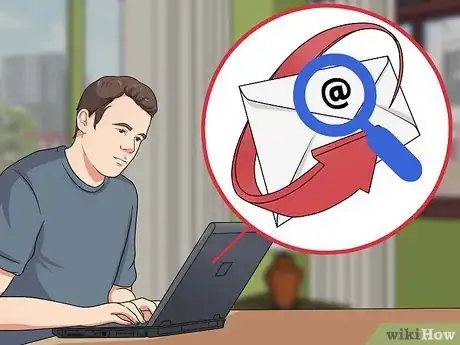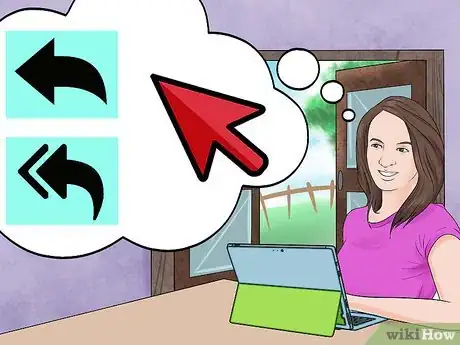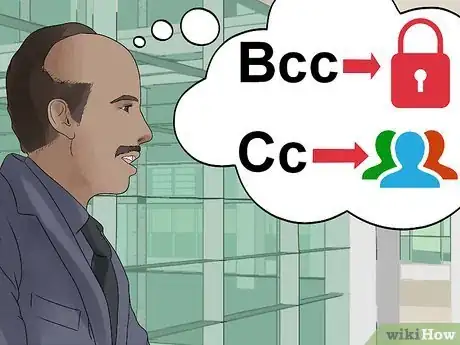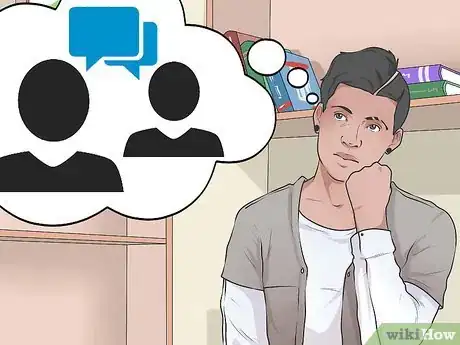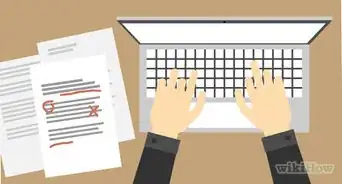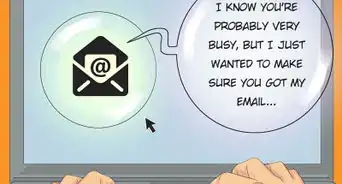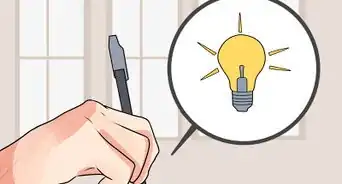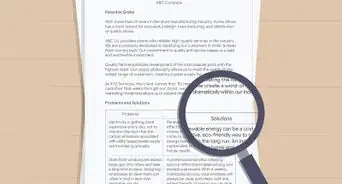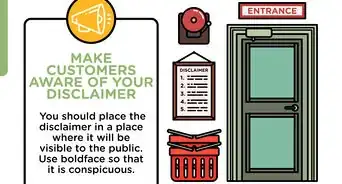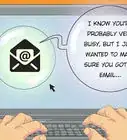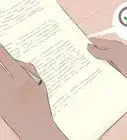This article was co-authored by Tami Claytor. Tami Claytor is an Etiquette Coach, Image Consultant, and the Owner of Always Appropriate Image and Etiquette Consulting in New York, New York. With over 20 years of experience, Tami specializes in teaching etiquette classes to individuals, students, companies, and community organizations. Tami has spent decades studying cultures through her extensive travels across five continents and has created cultural diversity workshops to promote social justice and cross-cultural awareness. She holds a BA in Economics with a concentration in International Relations from Clark University. Tami studied at the Ophelia DeVore School of Charm and the Fashion Institute of Technology, where she earned her Image Consultant Certification.
There are 7 references cited in this article, which can be found at the bottom of the page.
This article has been viewed 123,466 times.
Although Internet usage has caused an increased trend of informal communication practices, it's still a wise idea to follow through on proper business email etiquette when contacting a colleague for professional purposes. Much like writing a formal business letter, your business emails should not include slang terms, text message abbreviations and other common insertions used in informal emails or instant messages. By following a few tips and guidelines, your emails will reflect your professionalism and let your credentials shine.
Steps
Crafting the Email
-
1Label your emails with a professional subject line. The subject line of your email should be clear and to the point. The subject line should let the recipient know the purpose of the email. Instead of saying "Need to talk," try saying "discussion of X topic.[1]
- The subject should be between six and eight words.[2]
- If the email is being sent for a job application, include your name and the position you are applying for. If you were sending an email to a coworker, you would include the name of the project that the email is discussing.
-
2Have a professional email address. If you use your personal email address for business purposes, your email address should communicate your name (i.e. mary.smith@ or MichaelJones@). Email addresses such as hotmama@, cutiepie@, or mustlovedogs@ are not appropriate for business emails. If you work for a company, you should always use your work email address.[3]Advertisement
-
3Use a formal salutation. Your email should always begin with a professional salutation.[4] "Hey" or "What's up" is not appropriate. "Hi" or "Hello" are preferable.[5] If you are including the name of the recipient in your salutation, do not use a shortened version of their name (i.e. use "William" instead of "Will").
- If someone has a gender neutral name, like Chris Smith, and you do not know whether the person is a Mr./Mrs./Etc., it is best to write "Dear Chris Smith."
-
4Use professional language. You should use formal English when writing business emails. Avoid slang and colloquialisms in your email. Abbreviations, emoticons, and text message language (e.g. Lol) should not be used.
- Your email should be concise. Not only is the reader a busy person, but he or she may be reading your email on a mobile device. A short, to-the-point email is much easier to read and respond to than a lengthy, confusing one.
- Try not to address more than one topic in an email. Emails are brief forms of communication.[6] If you cannot address the topic in a brief manner, you may need to pick the phone and call the person.
-
5Be aware of your tone. In addition to using clear and concise language, you should read the email out loud to make sure that your email comes across as you intended it to. You do not want to sound harsh or abrupt.[7]
- Remember that your email must speak for itself. You are not there to convey the tone and intent for the reader. Emails do not come with body language and facial expressions. Also, humor does not translate well over email.[8]
-
6End the email properly. It is important that you end an email just like you would end any other conversation. You should end your email by saying "Thanks," "Thank You," or "Sincerely" followed by your name. Your emails should also include a signature.[9]
- Your signature lets the reader know how to contact you. It should include your name, company, address, phone, your email address, and a website link if you have one.
- You could also sign off your email with a closing phrase like "Warm Regards" or "Best Regards."[10]
-
7Proofread before you send. You should read your email multiple times before you send it.[11] Do not rely on spellcheck. People will notice grammatical errors and misspelled or missing words.[12] Proofreading is particularly important when you are introducing yourself for the first time through email. You want to make a good impression and not be judged by your email mistakes.
- When you are proofreading you should ask yourself: "Am I being clear and concise?" "Did I include any unnecessary information?" "Is there anything I can take out?"[13]
- You should also verify that you are sending the email to the correct recipient. It can be very embarrassing to send an email to the wrong person.
- If you're sending an attachment, check that the file is there before you hit "send."[14]
Corresponding through Email
-
1Know when to use Reply and Reply All. When you choose "Reply," you are sending the email back to the original sender. When you hit "Reply All," you are sending the email to all of the original recipients. Use "Reply All" sparingly and only when it is absolutely necessary to share your response with all of the original recipients.[15]
-
2Know the difference between Bcc and Cc. You should use "Bcc" when the privacy of the email recipients is important. This may be useful in group emails or large distribution lists. You should use "Cc" when you need to include other people in the conversation and privacy is not an issue. "Cc" is helpful when you just want to keep someone in the loop about what is going on.[16]
- It is very important that you use these two functions properly. "Bcc" should not be used to secretly pass along private information or to trap people. For example, you should not send an email to your coworker about a mistake they made and "Bcc" your supervisor.
Advertisement -
3Recognize when a phone call may be better. It may be quicker to pick up the phone instead of sending countless emails back and forth. It may be helpful to use the three email rule. If an issue has not been resolved within three emails, you should pick up the phone and call the person. There are times when the phone is more efficient than exchanging multiple emails.[17]
- Keep in mind that this rule is not set in stone. You should use your discretion when deciding it is time to pick up the phone.
-
4Know when to start a new conversation. If you need to discuss a different topic with the same recipient, you should start a new email. This will make it easier to keep track of conversations and will keep you from looking lazy.[18] For example, if you have been emailing someone about an upcoming meeting, you need to start a new conversation if you wanted to discuss the outcomes of a project that is being worked on.
Community Q&A
-
QuestionHow do you professionally email someone for the first time?
 Tami ClaytorTami Claytor is an Etiquette Coach, Image Consultant, and the Owner of Always Appropriate Image and Etiquette Consulting in New York, New York. With over 20 years of experience, Tami specializes in teaching etiquette classes to individuals, students, companies, and community organizations. Tami has spent decades studying cultures through her extensive travels across five continents and has created cultural diversity workshops to promote social justice and cross-cultural awareness. She holds a BA in Economics with a concentration in International Relations from Clark University. Tami studied at the Ophelia DeVore School of Charm and the Fashion Institute of Technology, where she earned her Image Consultant Certification.
Tami ClaytorTami Claytor is an Etiquette Coach, Image Consultant, and the Owner of Always Appropriate Image and Etiquette Consulting in New York, New York. With over 20 years of experience, Tami specializes in teaching etiquette classes to individuals, students, companies, and community organizations. Tami has spent decades studying cultures through her extensive travels across five continents and has created cultural diversity workshops to promote social justice and cross-cultural awareness. She holds a BA in Economics with a concentration in International Relations from Clark University. Tami studied at the Ophelia DeVore School of Charm and the Fashion Institute of Technology, where she earned her Image Consultant Certification.
Etiquette Coach If you don't know the person, you should introduce yourself. For example, if you writing to someone named Patricia, you wouldn't start off your message with "Hi, Patricia! I need you to look at this." Instead, you could say, "My colleague Jason referred me to you."
If you don't know the person, you should introduce yourself. For example, if you writing to someone named Patricia, you wouldn't start off your message with "Hi, Patricia! I need you to look at this." Instead, you could say, "My colleague Jason referred me to you." -
QuestionHow do I send a proper message to request time off?
 Tom De BackerTop AnswererBe short, polite and to the point. Try something like "Next Monday I need time off to ... Can you let me know if this is approved? Kind regards, ..."
Tom De BackerTop AnswererBe short, polite and to the point. Try something like "Next Monday I need time off to ... Can you let me know if this is approved? Kind regards, ..." -
QuestionWhat are the professional fonts to use in email?
 Tom De BackerTop AnswererCheck if your company has issued guidelines on the use of fonts. Use the standard font as set in your mail server. Alternatively, reply in the font that you received the message. In all cases, fonts should be clearly legible, not fancy. Avoid switching fonts, choose one and stick with it.
Tom De BackerTop AnswererCheck if your company has issued guidelines on the use of fonts. Use the standard font as set in your mail server. Alternatively, reply in the font that you received the message. In all cases, fonts should be clearly legible, not fancy. Avoid switching fonts, choose one and stick with it.
References
- ↑ http://www.businessinsider.com/how-to-write-an-email-subject-line-2015-1
- ↑ http://www.businessinsider.com/how-to-write-an-email-subject-line-2015-1
- ↑ http://www.businessinsider.com/email-etiquette-rules-every-professional-should-know-2015-4?op=1
- ↑ Tami Claytor. Etiquette Coach. Expert Interview. 20 May 2021.
- ↑ http://www.businessinsider.com/email-etiquette-rules-every-professional-should-know-2015-4?op=1
- ↑ http://www.coloradotech.edu/resources/blogs/october-2015/five-ways-to-improve-your-business-email-etiquette
- ↑ http://www.businessinsider.com/email-etiquette-rules-every-professional-should-know-2015-4?op=1
- ↑ http://www.businessinsider.com/email-etiquette-rules-every-professional-should-know-2015-4?op=1
- ↑ http://www.qcc.cuny.edu/business/theBusinessSociety/brochures/Business-Etiquette-124-13.pdf
- ↑ Tami Claytor. Etiquette Coach. Expert Interview. 20 May 2021.
- ↑ Tami Claytor. Etiquette Coach. Expert Interview. 20 May 2021.
- ↑ http://www.businessinsider.com/email-etiquette-rules-every-professional-should-know-2015-4?op=1
- ↑ http://www.forbes.com/sites/dailymuse/2014/03/11/are-your-emails-too-long-hint-probably/2/
- ↑ Tami Claytor. Etiquette Coach. Expert Interview. 20 May 2021.
- ↑ http://www.pstcc.edu/itsc/_files/pdf/Email/EmailEtiquette.pdf
- ↑ http://www.pstcc.edu/itsc/_files/pdf/Email/EmailEtiquette.pdf
- ↑ http://www.coloradotech.edu/resources/blogs/october-2015/five-ways-to-improve-your-business-email-etiquette
- ↑ http://www.pstcc.edu/itsc/_files/pdf/Email/EmailEtiquette.pdf
About This Article
To write a good business email, start with a professional subject line—for example, instead of “Let’s chat!” try, “Request for meeting Monday afternoon.” Then, open your message with a formal salutation, like “Dear Mr. Jones.” When you’re ready to compose your message, remember to keep the content concise, formal, and polite. Wrap it up with a formal sign-off, like “Sincerely” or “Thank you,” and don’t forget to check it over for spelling and grammar errors before you hit send! Read on for more tips, including how to decide when to make a phone call instead of sending an email.
